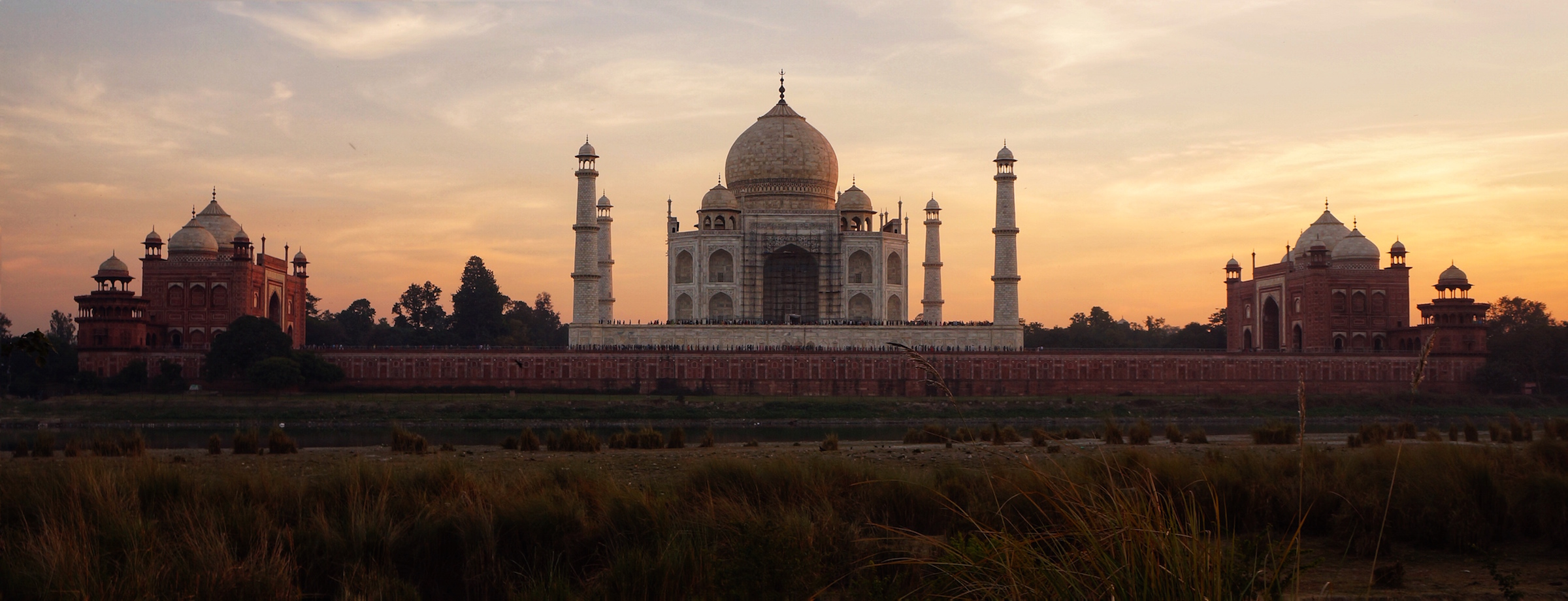
The iconic Taj Mahal, built in the 17th century and inscribed on the World Heritage List in 1983.
Ask one hundred different people for their impression of Delhi, and you’ll receive one hundred different replies. Noisy, crowded, lively, polluted, colorful, overwhelming – all of these adjectives are true, yet even together they cannot begin to describe the cacophonic presence of this sprawling metropolis.
During December 11 – 15, Delhi hosted the 2017 General Assembly of the International Council on Monuments and Sites (ICOMOS). Global Heritage Fund’s Elliot Olson attended the assembly, reporting on the sessions and experiencing life in this fascinating part of the world.
It is only the first morning, yet my week is off to an exhausting start. I have already dodged around a rambunctious litter of puppies, engaged in a spirited round of tuk-tuk negotiations, and flattened myself against a narrow alley to avoid a roaring motorcycle charging past. Excitedly sharing the details of my morning’s perilous journeys – Such cute puppies! Can you believe the aggression of the tuk-tuk drivers? And the speed of the motorcycle, what a nut! – I am surprised to be answered with good-natured apathy. “Eh,” shrug my colleagues, “you have to remember – this is India.”
Ah, yes… I am finally in India. To be precise, I am currently in India’s capital city, Delhi. A far cry from my tiny hometown (pop. 20,000) in California, Delhi is the hustling, bustling, teeming home of over 26 million people. With over 2,000 years of history and three unique World Heritage sites – Humayun’s Tomb, Qutab Minar, and the Red Fort – Delhi is also an ideal setting for the International Council on Monuments and Sites (ICOMOS) General Assembly. During the next five days, I will be joining over 1,000 heritage professionals from around the world to discuss the largest issues in the modern heritage field.
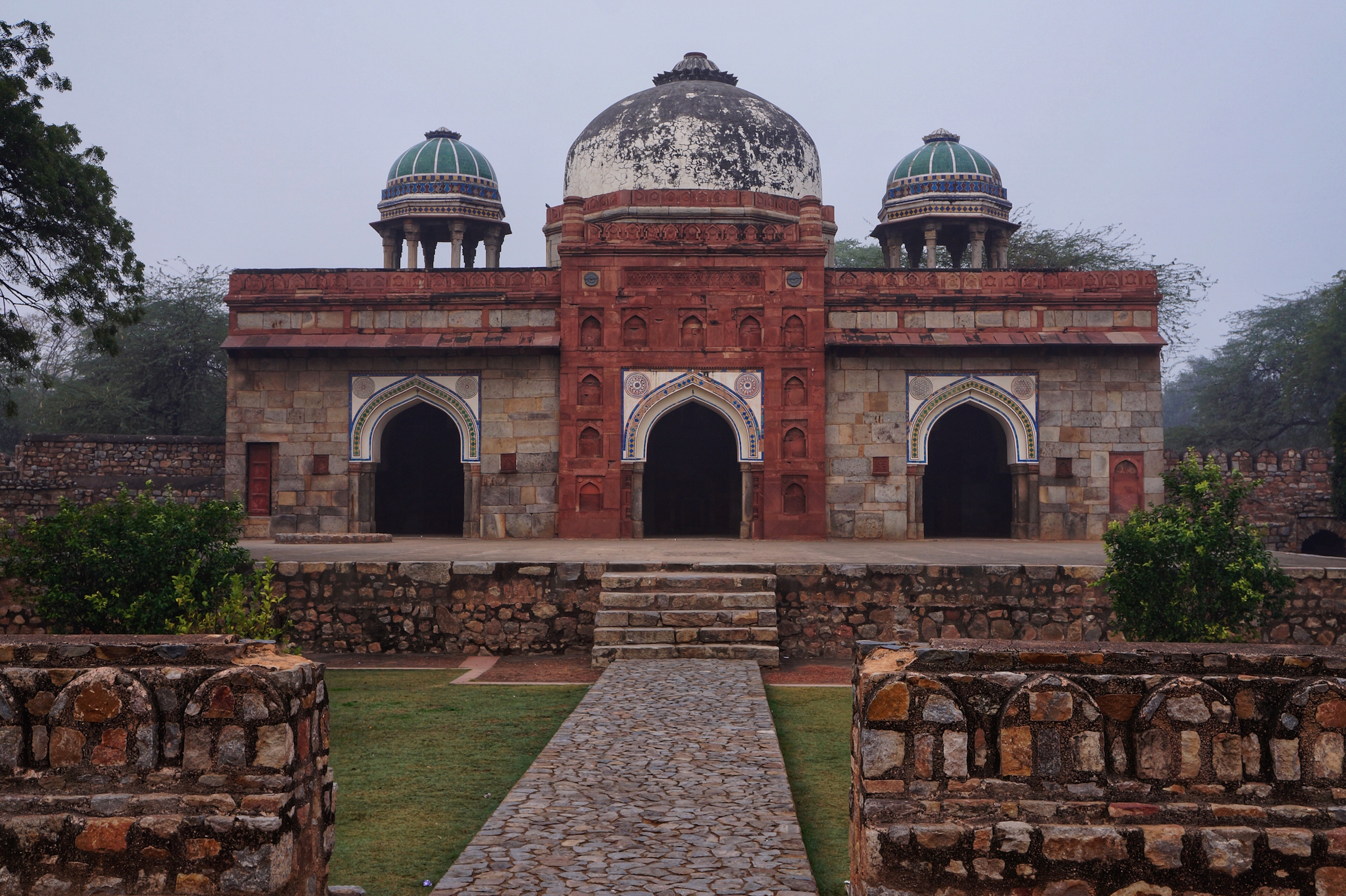
One of several structures comprising the UNESCO World Heritage Site of Humayun’s Tomb in Delhi, India.
A Brief Background on ICOMOS
Formed in 1965, ICOMOS is one of three advisory bodies to UNESCO’s World Heritage Committee on questions of heritage. Its triennial General Assembly gathers together the global community of heritage experts and enthusiasts to discuss conservation theory, strategies, planning and more. This year’s topic was “Heritage and Democracy,” with subtopics covering areas such as urban development, peace and reconciliation, digital technology and integrations of culture and nature.
Throughout the week of sessions, additional themes began to emerge, binding the subtopics together in new and unplanned ways. By the end of the week, there had been a noticeable emphasis on the importance of engaging communities, being mindful of local and regional heritage practices and purposefully including local community knowledge alongside more widely accepted international heritage standards.
Although these ideas are not new – they have all been introduced and discussed within the heritage field, and are central to the Global Heritage Fund Preservation by Design® approach – this unexpected emphasis indicated a larger shift within the heritage field, one that closely aligns with our philosophy. Having been immersed in the GHF mindset, I was already aware of the need to incorporate communities and ensure local engagement. However, it was refreshing to hear this message from so many presenters discussing such a wide variety of topics.
“We are looking at a paradigm shift… with people-centered approaches as the way forward.”
Keynote Speaker Dr. Gamini Wijesuriyaa
In addition to these themes, individual buzzwords were repeated frequently through the rooms, winding their ways through lectures, presentations, speeches and casual conversation. As I passed conversing conservators, historians, archaeologists, professors, researchers, and other heritage professionals, certain terms rose audibly from clustered speakers. Technology. Inclusivity. Collaboration. Youth.
Rise of the Emerging Young Professionals
Throughout the week, discussions turned time and again to the question of youth. Where are the young heritage practitioners? How can the heritage field attract more youth?
Although certainly a minority, there was a visible contingent of young heritage professionals in attendance. During session breaks, students from Germany, Singapore, Canada and the United States gathered to compare notes on the latest series of presentations. Nearby, fresh-faced archaeologists from Portugal and Australia discussed their field experiences at various digs. A team of young “Nature Culture Reporters” lurked in the backgrounds of every Nature Culture Journey session, snapping photographs on smartphones and posting interesting quotes and tidbits to social media. Through their constant presence and cumulative years of experience, all these young professionals demonstrated their obvious passion for studying and conserving historic sites.
At the end of the week, the youth contingent had an unexpected reason to celebrate. Voters elected Clara Rellensmann, the youngest candidate, to the ICOMOS Board over her formidable opponent, the incumbent ICOMOS Germany President, Jörg Haspel. As Ms. Rellensmann emphasized in her speech, after a full week of discussing the need to better include young heritage professions, this was the time for action. Her speech was clearly persuasive, as her campaign was successful and she joined the board.
Discovering Delhi
The General Assembly did not end with each day’s official program of presentations and administrative details. In addition to the numerous lectures, speeches, videos, receptions, workshops, and panels, conference organizers also offered two unique heritage walks. The first walk covered the grounds of Humayun’s Tomb, arguably Delhi’s most famous UNESCO World Heritage site. Situated in a large garden area that includes several other 16th-century Mughal garden-tombs, this site provided a tranquil escape from the busy city streets.
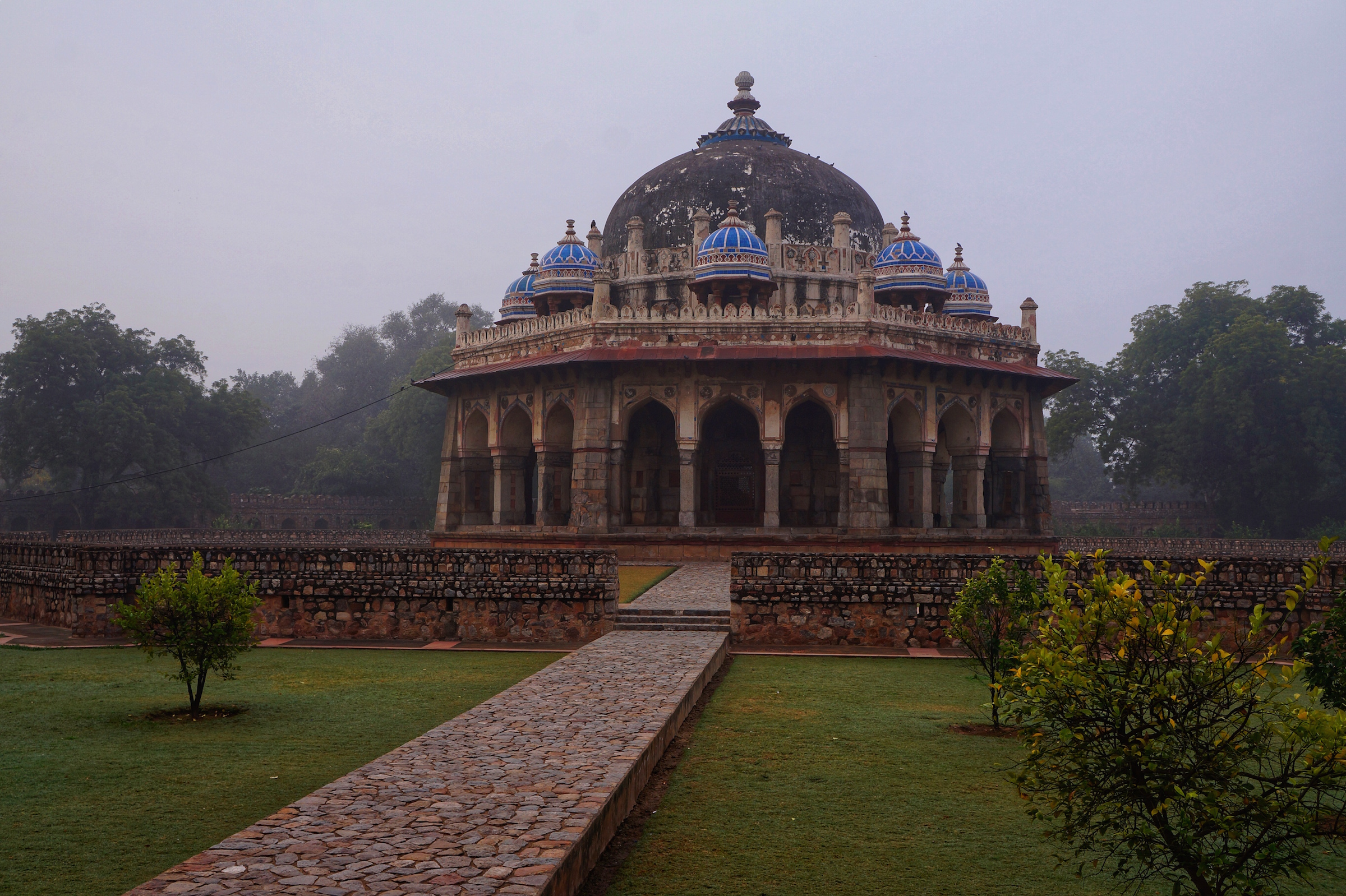
Isa Khan’s Garden Tomb, part of the UNESCO World Heritage Site of Humayun’s Tomb.
The second heritage walk wound through the narrow streets of the Nizamuddin West neighborhood. I joined other attendees in swapping the clean conference venue and well-organized schedule for crowded and chaotic alleys, where shoppers jostled with motorbikes, schoolchildren, and livestock past heaping stalls of flowers, spices, snacks, and all varieties of temple offerings. This heritage walk emphasized local sites and the work of the Aga Khan Development Network, including a local school, women-centered business center, and restoration at the Jama ‘at-Khana Masjid.
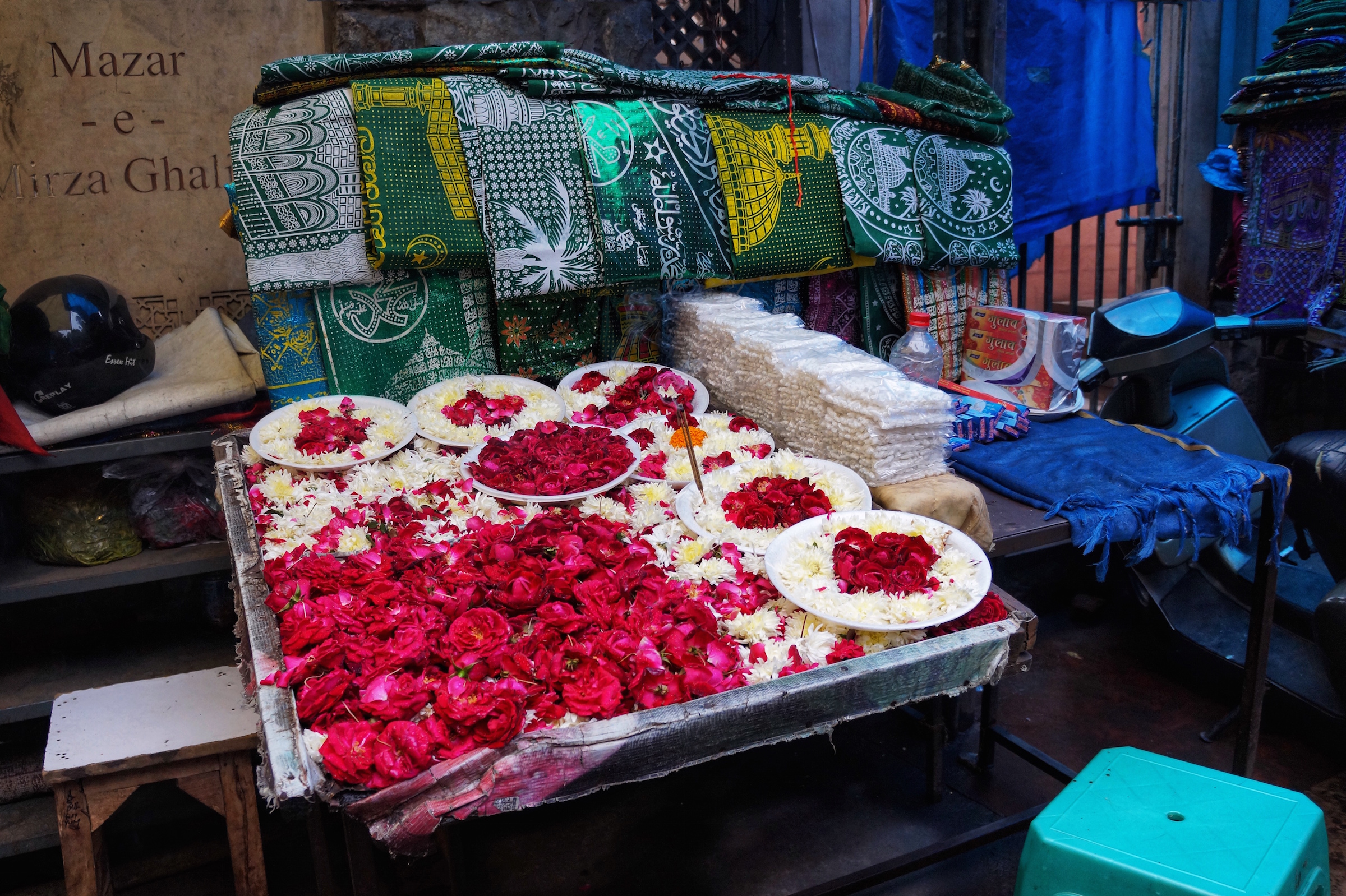
A local stall in the Nizamuddin West neighborhood.
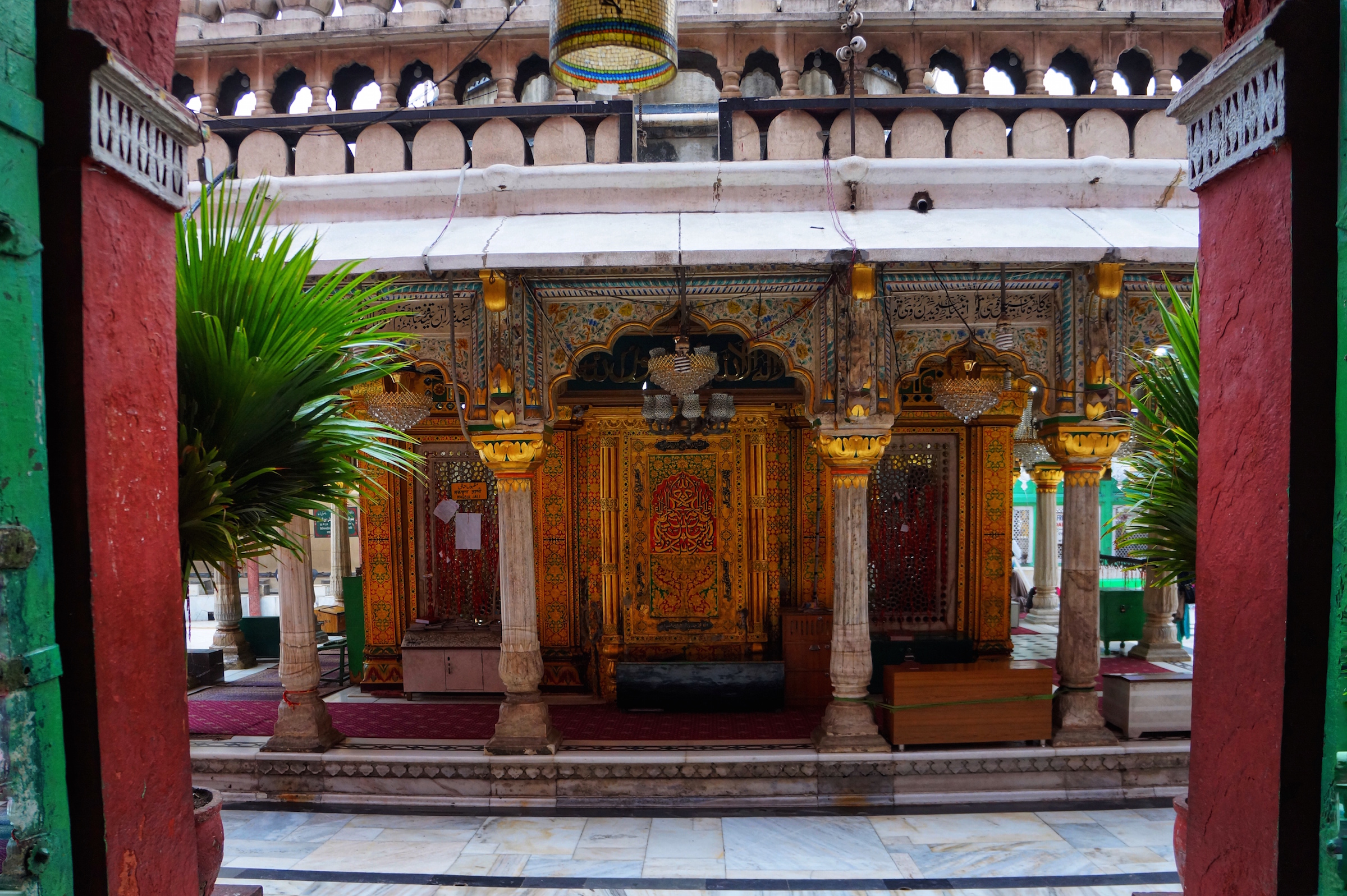
A view from within the Jama ‘at-Khana Masjid in Nizamuddin West, Delhi.
Obstacles and Optimism
The General Assembly ended on December 15th, and since then, the holiday season has come and gone with typical speed. Presents have been opened, holiday feasts have been consumed, family has descended and departed again. 2018 is upon us, and with this new year comes new potential. As we all know, 2017 was a challenging year for heritage conservation. However, the new year brings new promise.
As the closing speakers at the General Assembly emphasized, the heritage field faces numerous opportunities to improve. Heritage offers multiple ways of seeing the past and connecting people through shared discourses, but we must all work to engage communities and better integrate local knowledge. By engaging communities and especially younger generations, we can help ensure that past mistakes are not repeated by the next generations.
As the world is increasingly divided and ridden with conflict, our work is especially important. Now more than ever, we must connect people with their heritage sites, fostering sustainable ownership and care. In 2018, we can all help save the world’s most unique historic sites – and maybe they can even help save us.
About Global Heritage Fund (GHF)
Global Heritage Fund’s mission is to sustainably preserve the most significant and endangered cultural heritage sites in developing regions of the world. With this mission, it also works to empower local communities through heritage preservation. Believing in a future that is beyond monuments, GHF partners with local people, communities, organizations, and governments to both preserve the heritage of the past and ensure that it is a beneficial part of the present.

